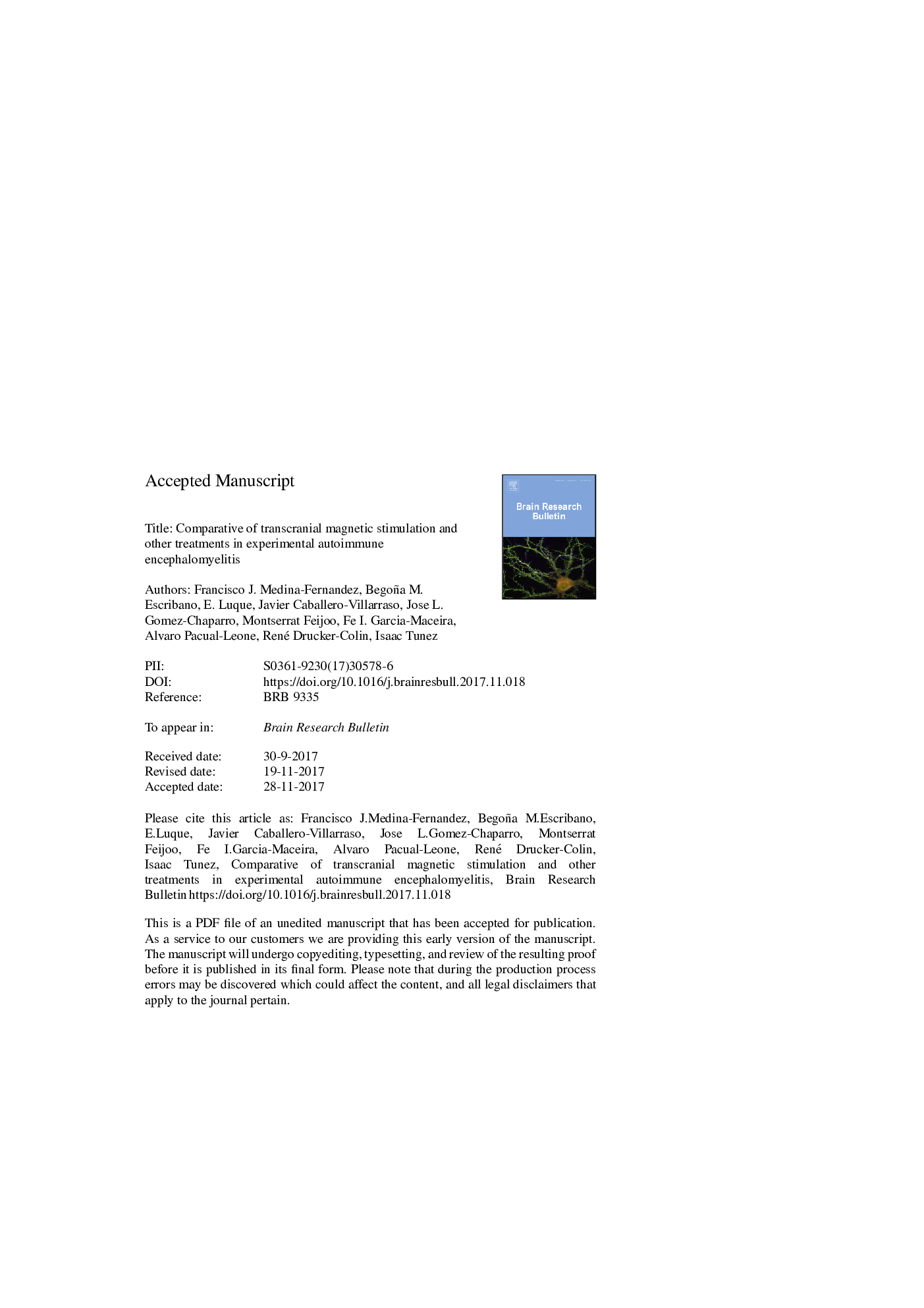| Article ID | Journal | Published Year | Pages | File Type |
|---|---|---|---|---|
| 8838991 | Brain Research Bulletin | 2018 | 18 Pages |
Abstract
The effects of transcranial magnetic stimulation (TMS), natalizumab (nata), dimethyl fumarate (DMF) and dexamethasone (DEX) on clinical score and oxidative stress produced by a single dose of myelin oligodendrocyte glycoprotein (MOG) in tail of Dark Agouti rats was studied. TMS (60 Hz and 0.7 mT), nata (5 mg/kg), DMF (15 mg/kg) and DEX (300 μg/kg) was applied for 21 after the administration of MOG (150 μg). We estimated clinical score, as well as lipid peroxides, carbonylated proteins and reduced glutathione (GSH)/oxidized glutathione (GSSG) ratio content in brain, spinal cord and blood. MOG triggered significant increase in clinical score and in the levels of lipid peroxides and carbonylated proteins levels, but reduced GSH/GSSG ratio in brain, spinal cord and blood. Both TMS and clinical treatments, although TMS more significantly, decreased the changes caused by MOG administration. These results support the antioxidant and neuroprotective action of TMS, as well as an activity higher than other clinical treatments.
Keywords
Related Topics
Life Sciences
Neuroscience
Cellular and Molecular Neuroscience
Authors
Francisco J. Medina-Fernandez, Begoña M. Escribano, Evelio Luque, Javier Caballero-Villarraso, Jose L. Gomez-Chaparro, Montserrat Feijoo, Fe I. Garcia-Maceira, Alvaro Pascual-Leone, René Drucker-Colin, Isaac Tunez,
